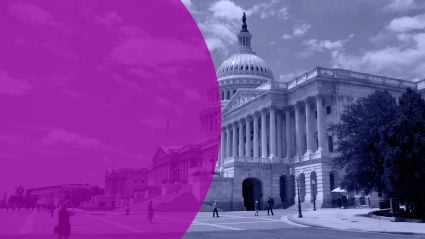The Honorable Kathleen L. Kraninger
Director
Consumer Financial Protection Bureau
1700 G Street, NW
Washington, DC 20552
Re: Docket No. CFPB-2019-0039; RIN 3170-AA98; Advance Notice of Proposed Rulemaking on the Qualified Mortgage Definition under the Truth in Lending Act (Regulation Z)
Dear Director Kraninger:
The Milken Institute appreciates the opportunity to submit our response to the Advance Notice of Proposed Rulemaking (ANPR) on the Qualified Mortgage Definition under the Truth in Lending Act (Regulation Z). The ability-to-repay (ATR) and qualified mortgage (QM) rule (ATR/QM rule) is a centerpiece of post-financial crisis consumer protections and mortgage reform, instilling safety and soundness into the housing finance landscape for the benefit of borrowers, industry, and the national economy. We appreciate the opportunity to share our thoughts with the Consumer Financial Protection Bureau (CFPB or the Bureau) on how to evolve the ATR/QM rule at this critical juncture.
With the QM Patch set to expire in January 2021, it is imperative that the CFPB address deficiencies in the ATR/QM rule. We support the QM Patch expiration, with a short-term extension if necessary to avoid material market disruption. The CFPB must improve Appendix Q or implement an alternative path to QM safe harbor status in connection with the QM Patch expiration.
As a general matter, we suggest the following overall goals for revising the ATR/QM rule:
- Facilitate access to mortgage credit at sustainable levels for all consumers who possess an ability to repay the credit.
- Discourage lenders from extending unsustainable mortgage credit through heightened liability exposure and disclosure requirements.
- Create the largest possible QM safe harbor space without weakening its intended purpose by establishing rigorous tests designed to approve only those borrowers who demonstrate a clear presumptive ability to repay.
- Maintain current statutory QM product restrictions that prohibit risky loan features.
- Expand Appendix Q’s documentation and verification criteria for added flexibility and clarity.
- Retain the eight general ability to repay underwriting criteria.
- Minimize additional regulatory compliance costs associated with terminating the Patch, without sacrificing existing consumer protections.
Adhering to these goals in developing revisions will help the CFPB stay true to its mission of expanding access to sustainable credit. With these goals in mind, we address the following questions from the ANPR in our response.
1) Assuming without deciding that, in addition to the statutory factors, the Bureau retains as part of the General QM loan definition a criterion that directly measures a consumer’s personal finances, should the Bureau continue to include only a DTI limit, or should the Bureau replace or supplement the DTI limit with another method (e.g., residual income or another method)?
2) If the Bureau retains a DTI limit as part of the general QM loan definition, should the limit remain 43% or should the Bureau increase or decrease the DTI limit to some other percentage?Assuming without deciding that the Bureau retains a criterion that directly measures a consumer’s personal finances—DTI ratio, residual income, or some other measure—should creditors be required to continue using Appendix Q to calculate and verify debt and income? Should the Bureau replace Appendix Q? If the Bureau retains Appendix Q, how should it be changed or supplemented?
- Summary Response to (1) and (2): The Bureau should increase the QM debt-to-income ratio (DTI) limit to 50 percent and include compensating factors that directly relate to ability to repay, and not to default risk, willingness to repay, or loss severity. Notably, we recommend residual income requirements at certain DTIs, with limited exceptions for specified compensating factors. We also recommend consideration of alternatives other than DTI, but not without instituting appropriate guardrails.
3) Assuming without deciding that the Bureau retains a criterion that directly measures a consumer’s personal finances—DTI ratio, residual income, or some other measure—should creditors be required to continue using Appendix Q to calculate and verify debt and income? Should the Bureau replace Appendix Q? If the Bureau retains Appendix Q, how should it be changed or supplemented?
- Summary Response to (3): Until the CFPB task force can complete an evaluation of residual income as we describe in our response, we recommend the retention of some form of bright-line, standardized underwriting rules to achieve QM status. These rules could come in the form of a revised and more robust and nimble Appendix Q or a standardized underwriting model.
4) . If the Bureau does not retain Appendix Q or permits use of an alternative, what standard should the Bureau require or permit creditors to use to calculate and verify debt and income? Should the Bureau specify in Regulation Z an existing version of a widely used method of calculating and verifying debt and income that creditors would be required to use? Alternatively, to provide flexibility to creditors, should the Bureau combine a general requirement to use a "reasonable method" with the option to use, as a safe harbor, a specified, existing version of a widely used method for calculating and verifying debt and income? If the Bureau were to specify an existing version of a widely used method for calculating and verifying debt and income under either of the approaches described in this paragraph, which method (or methods) should be allowed? Should Appendix Q be one of them?
- Summary Response to (4): The CFPB should reserve QM status to those loans that demonstrate a presumptive, clear ability to repay. Prescriptive QM rules that afford certainty to the market are critical. The eight ability to repay underwriting factors reflect reasonable “common-sense” underwriting criteria but allow too much variation to provide the required certainty. We recommend improvements to QM standards in our response.
We begin with a longer-term recommendation that the CFPB establish a task force to investigate the feasibility of developing and testing a robust, standardized measure of residual income, which we believe should lie at the heart of determining a consumer’s ability to repay. We then discuss the adoption of near-term interim proxies.










